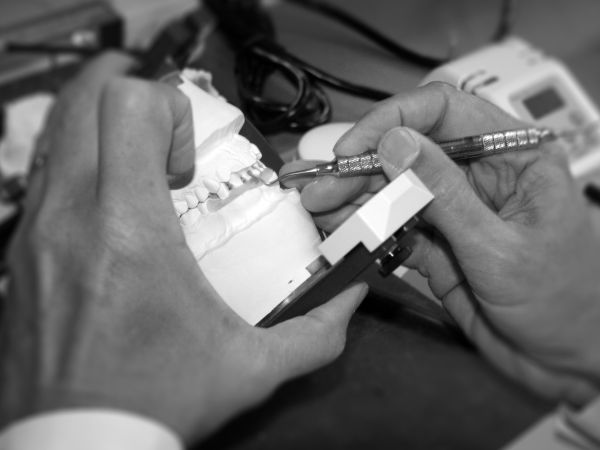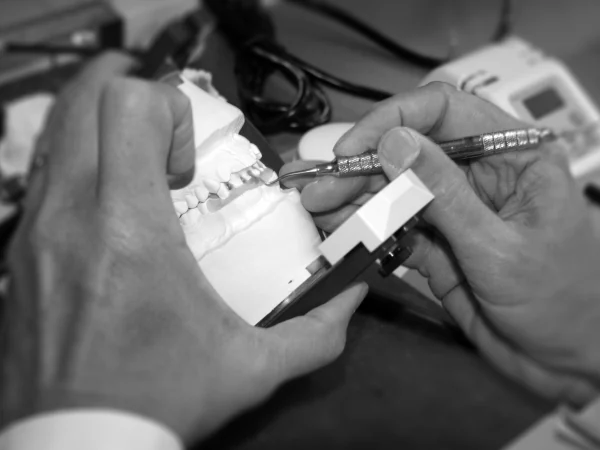
How to recognize if your patient should be equilibrated
In the practice of complete dentistry the dentist is committed to an examination, diagnosis, and treatment planning process and has developed the skill of recognizing the signs of instability in a patient’s masticatory system.
 It is our responsibility to offer the patient the most conservative treatment method to achieve the desired end result- a stable, comfortable, healthy dentition and supporting structures that matches their esthetic desires. The most critical skill to be developed in evaluating a patient’s occlusion is locating and verifying centric relation. If the examination reveals stable healthy TMJ’s and load testing is negative, Centric Relation serves as the starting point to determine the amount of discrepancy between CR and MIP.
It is our responsibility to offer the patient the most conservative treatment method to achieve the desired end result- a stable, comfortable, healthy dentition and supporting structures that matches their esthetic desires. The most critical skill to be developed in evaluating a patient’s occlusion is locating and verifying centric relation. If the examination reveals stable healthy TMJ’s and load testing is negative, Centric Relation serves as the starting point to determine the amount of discrepancy between CR and MIP.
Once the doctor becomes proficient in locating and verifying centric relation, discovering occlusal discrepancies becomes routine. The question of course is do all CR/MIP discrepancies need equilibration? The answer is only the ones that are contributing to the breakdown or instability of the masticatory system. The extent of the breakdown will be discovered in the examination of each part of the system, ie. joints, muscles, periodontium, and dentition.
Common Scenario
A common scenario is a patient presents after having restorative dentistry on one or two posterior teeth with a complaint of discomfort or difficulty chewing on those teeth. If the joints are stable, the use of bilateral manipulation to centric relation will facilitate locating the offending contact that can be adjusted back to occlusal harmony. Where many dentists get into trouble is in the indiscriminate grinding of the new restoration and asking the patient how it feels. This guess-and-grind technique is time consuming and frustrating for both the doctor and the patient, not to mention mutilates the technician’s work by unnecessary removal of porcelain.
Complicated Scenario
In more complicated restorative cases involving many teeth, before treatment begins careful study of properly mounted models will determine a combination of treatment options starting with equilibration, or reductive reshaping, to arrive at the desired goal of equal intensity contacts on all teeth in centric relation. In some cases, equilibration is the only treatment necessary to develop an ideal occlusion. In other cases a combination of Reshape (equilibration), Reposition (orthodontics), Restore, or Reposition (moving the alveolus) will be required. This treatment approach makes large cases flow smoothly and predictably from start to finish.
When NOT to Equilibrate
Another way to answer this question is to determine how to recognize if your patient should NOT be equilibrated. Issues such as longstanding TMD symptoms, facial pain, muscle soreness, or load testing that results in tension and tenderness in either joint should be resolved before proceeding. Patients with complicating emotional issues or lack of understanding and acceptance of the procedure are situations that are not appropriate to equilibrate.
In order to have success in equilibration we need a stable joint, a skilled operator, and a definitive plan based on careful examination and diagnosis.
Much more information about equilibration can be found in Chapter 33 of Dr. Dawson’s book Functional Occlusion: From TMJ to Smile Design and in the hands-on dental course The Art and Science of Equilibration taught at The Dawson Academy.









Leave a Reply
Want to join the discussion?Feel free to contribute!